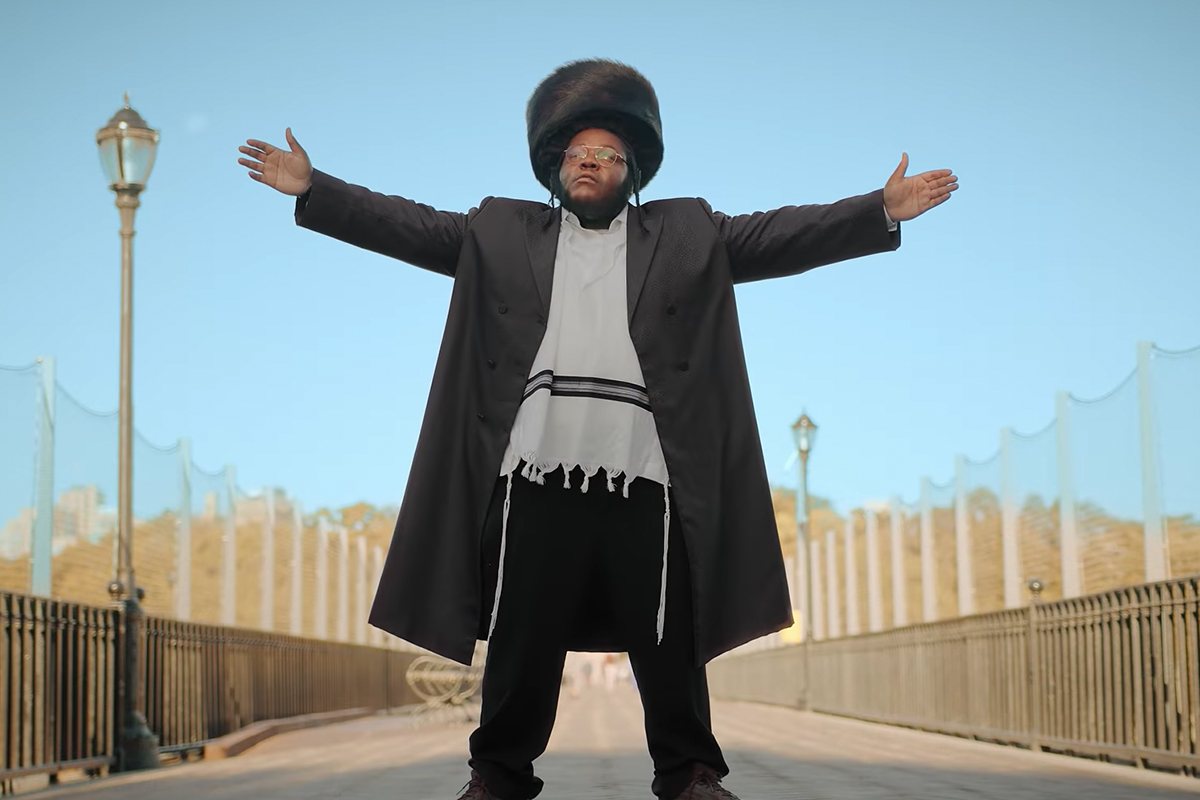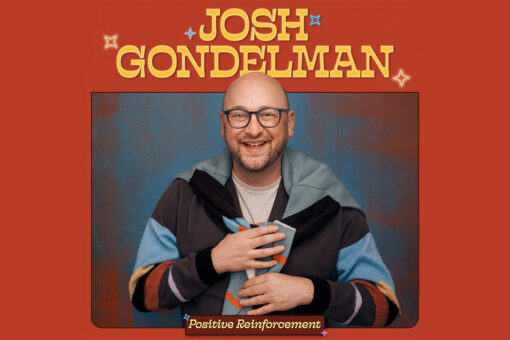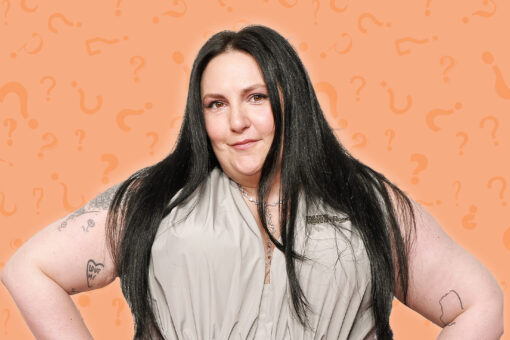Nissim Black knows that wherever he goes, he’s going to turn heads.
“There’s always these questions,” the rapper explains to me from his home in Israel. “Like, ‘Well, are you still Black? How Black are you? How does that work? But you’re also Jewish? Jews are white?’ No they’re not!” The questions annoy him, and rightfully so. Yes, he’s Black and Jewish and Orthodox. No, that combination does not make him any less of any of those identities.
His new single, “Mothaland Bounce,” sets the record straight. “I wanted to be able to just sort of lay it all out there, and make a statement, so I could at least limit the questions.” In many ways, the song serves as a declaration of who he is. Even though he’s been active as a rapper since 2006, “Mothaland Bounce” is a re-introduction of sorts: He’s Black, Jewish, from Seattle, living in Jerusalem, and “Hitler’s worst nightmare” (arguably my favorite lyric in the entire song).
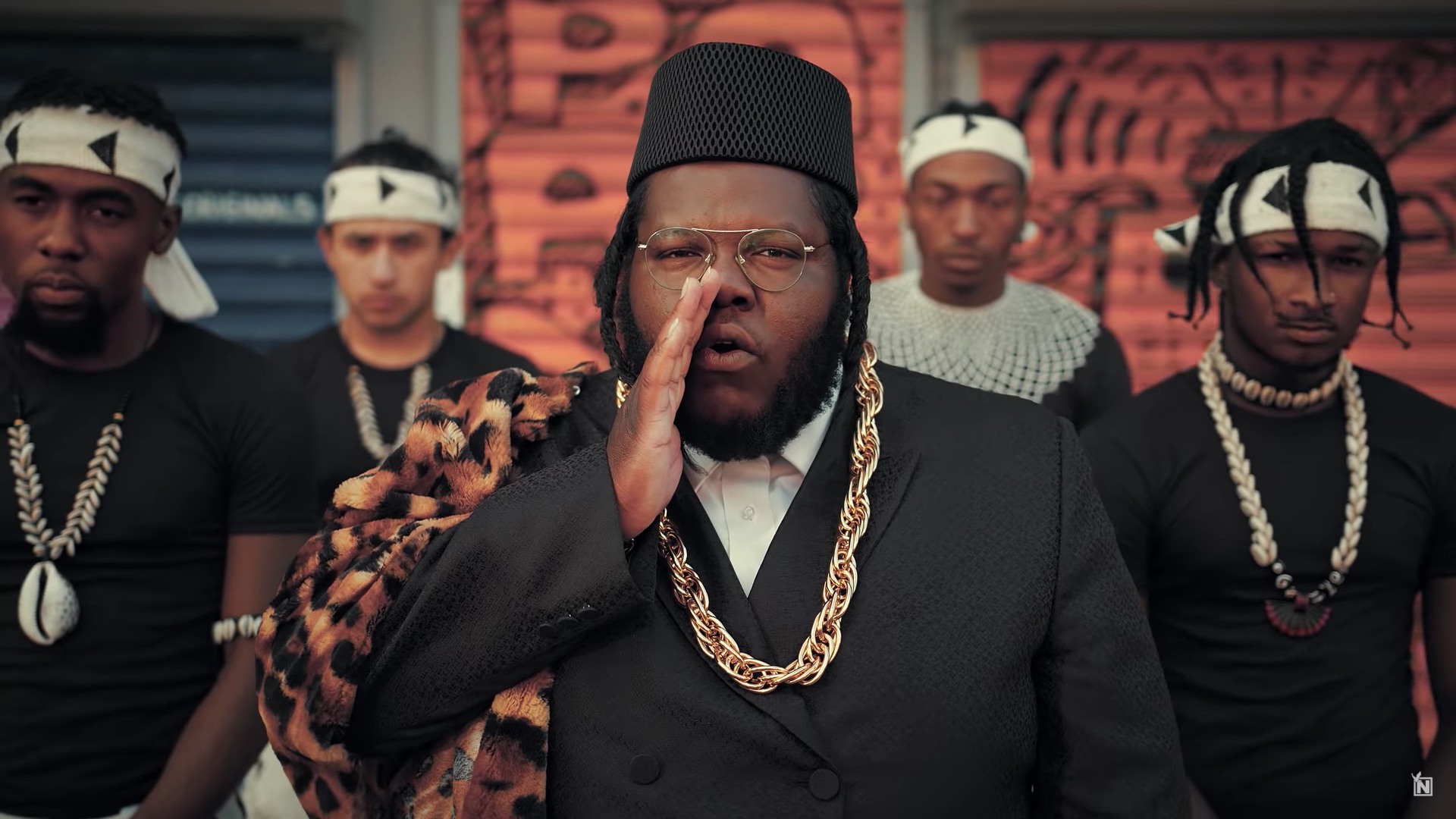
Making “Mothaland Bounce” was a “relief,” Black says. “I’ve been spending time with a friend of mine in LA, and he [told me], ‘Back in hood, everybody feels like you just forgot about them.’ I’m living in a different world. I’m living in Jerusalem, I’m across the world. Even though I keep up with some family, I’m not as involved right now. People feel like I may have left that struggle, [but] it’s not really true, you know what I’m saying? It’s just a different type of struggle, but I’m still there in the struggle. I’m still with the people.”
The video for “Mothaland Bounce” pays homage to his past and his present; the visuals are inspired by one of Black’s favorite films, Coming to America. (In the iconic Eddie Murphy film, Murphy arrives in America from a wealthy, fictional African nation of Zamunda.) The video ends with Black in a barbershop, where the barber asks him to take off his hat — when he does, he reveals a kippah underneath. The barber goes, “Another one?!” It’s funny, Jewish, and pays homage to the barbershop scenes in Coming to America.
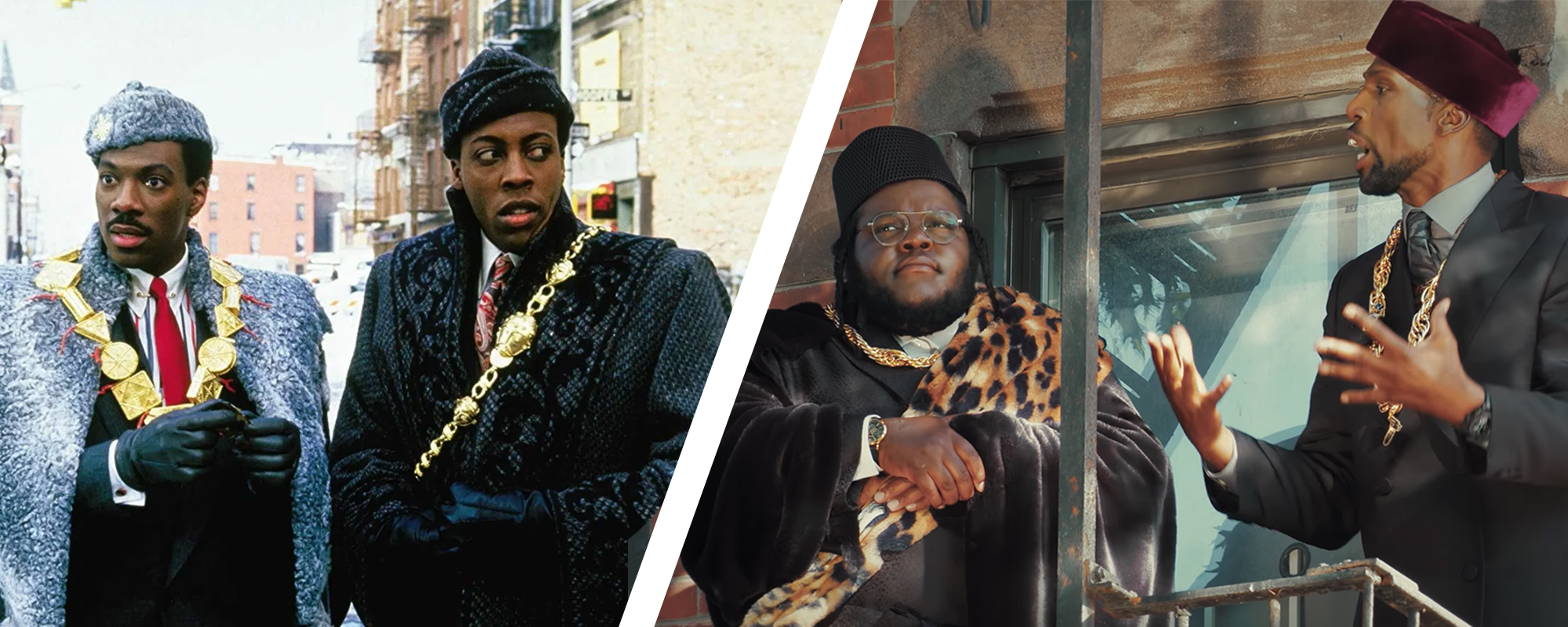
The video shows Black rapping and dancing with three different groups of male dancers. They all come together at the end of the video, showing how he’s made peace with all of his different identities.
“The three different groups are three different aspects of me: The African dancers represent the slaves that came here to America, which is our past. And then, you have the street dancers, the urban aspect.”
The video depicts these two groups as facing off against each other, representing Black “trying to figure out what I was.” But then, last, the Hasidic dancers show up near the end. “What brought peace for me was Judaism,” Black explains, “So the Hasidic guy, he comes to break up the two things, and he brings shalom. It was all very telling of who I was.”
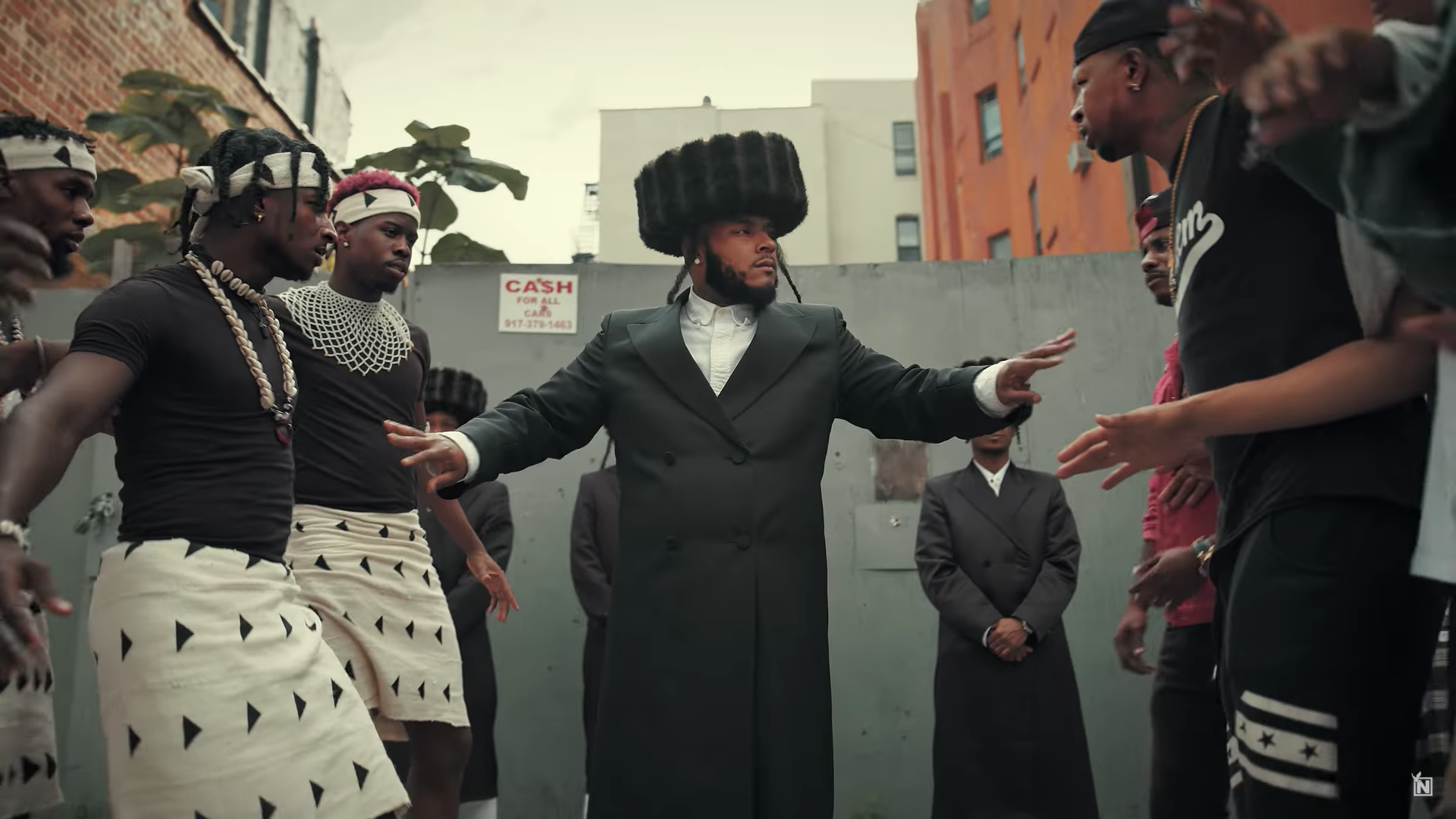
The rapper, 33, is a dad of six who had a long, winding path towards Judaism. His journey begins in Seattle, where he was born Damian Jamohl Black to James “Captain Crunch” Croone and Mia Black, both rappers. (They were part of the Emerald Street Boys, Seattle’s first rap group, and Emerald Street Girls.) His parents split when he was 2, and his mom remarried.
His grandfather was a devout Muslim, so “my first introduction to religion,” Black says, “was Islam.” If anybody had asked Black as a kid, he explains, he would say he was Muslim, because of his grandfather’s influence on his life. But at 13, he converted to Christianity after attending a summer camp, the Gospel Mission Youth Center. The conversion was “good for me,” Black says, “because I was already part of a street gang, Disciple Nation folks, and this helped me get away from the street mentality for a long time.” (Disciple Nation refers to the Black Gangster Disciples, or BGD, that Black also refers to in “Mothaland Bounce.” Funny enough, the main logo of the group is a six-pointed Star of David.)
On “Mothaland Bounce,” Black plays on this mix between his history and present, rapping:
He said it’s God’s plan, but, I’m God’s man / I used to run with BGD / I dropped the B and put an O after the G / Six points still big up King D
In the synagogue, camouflaged, but I can’t wipe the skin off / I’m proud of it / It’s a loud a bit, but I’m not trying to criss-cross.
This verse is Black at his best: laying it all on the line. Acknowledging his past, talking openly about his spirituality, and addressing the reality of being a Black Jewish person. Plus, the “God’s plan” lyric is a nod to the song of another Black Jewish rapper, Drake.
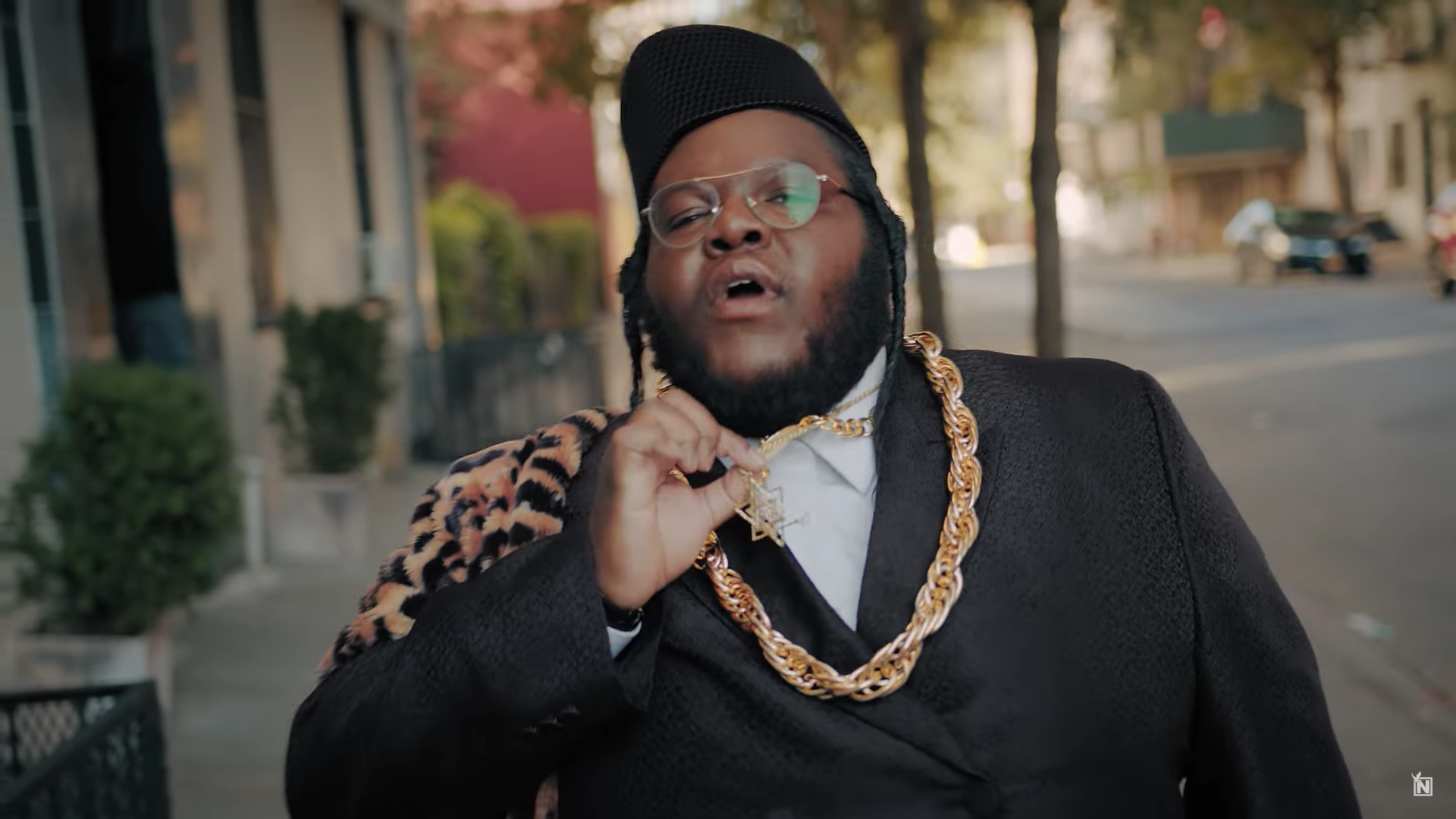
At 17, he had a potential offer from a record label and wanted to pursue it — the state of hip-hop at the time was focused on a “gangsta rap type of thing,” so the record label pushed him to adopt a “harder persona than what I was giving them.” He ended up releasing his first singles on an independent label, under the name D. Black. (Here’s one of his few music videos from that era, released in 2006.)
Then, Black explains, as success started happening with his music, in 2008, “I got in an altercation with another artist, and this altercation led to a kill or be killed situation.” This situation led him to start praying over how he ended up where he was. “Eventually, all my praying and soul searching led me to Judaism,” which felt very natural to him. Black had grown up in a Jewish neighborhood in Seattle, and used to walk by a synagogue on his way to elementary school. In a full circle situation, he ended up moving back to his childhood neighborhood with his wife after they both converted to Orthodox Judaism under Sephardic Rabbi Simon Bezaquen. They married in 2008, but re-married after their conversion in an Orthodox marriage ceremony in 2013 at the Sephardic Bikur Holim Congregation in Seattle, Washington.
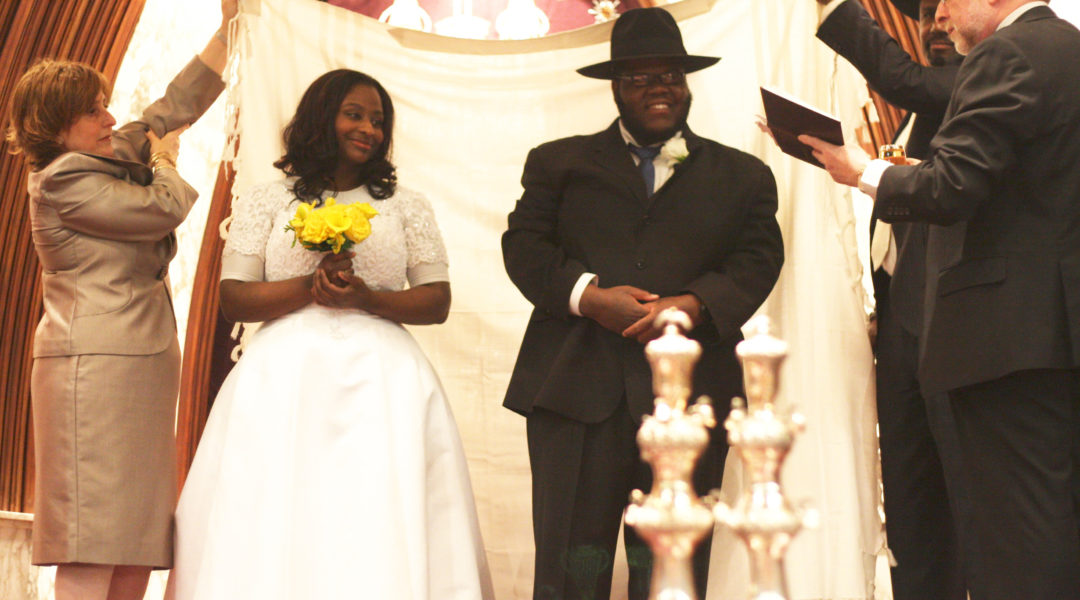
Making and releasing “Mothaland Bounce” was a big risk for Black, whose music in the last decade has been aimed at a primarily Jewish audience. “I’m very shocked at how much this song has been shared, how well received it was,” Black says. “In terms of the Jewish world, it was a big risk; a lot of them are religious.” Black was worried they wouldn’t understand a song where the influences are very clearly Black culture and Black history.
Yet, this shift is in line with things he’s been thinking about since moving to Israel in 2016, when he made aliyah with his wife and children. Living in Israel, he’s been inspired to create a more universal sound. “Mothaland Bounce,” therefore, demonstrates this new Nissim Black sound: one that’s not just aimed at Jews, but at everyone. “I’m casting a net a little bit further — a lot further — than what my current audience has been.”
“Being here in Israel, especially after living in Jerusalem, is like the center of the world. Everybody comes here. Everybody comes here!” Black exclaims. “I feel like my mind has sort of expanded, and my music’s becoming even more and more universal.” Moving to Israel has pushed Black out of his comfort zone. On his new record, he says, there are things he does that he “wouldn’t have done” back in Seattle.
“I’m even creating at a crazier rate than what I was before, with even more obligations of life! I have more children,” he laughs. “Creating is almost like I’m like a kid all over again.”
Black and his wife, Adina, have six children; their eldest daughter, 11, is set to become a bat mitzvah in a month and a half. Their youngest son is 7 months old.
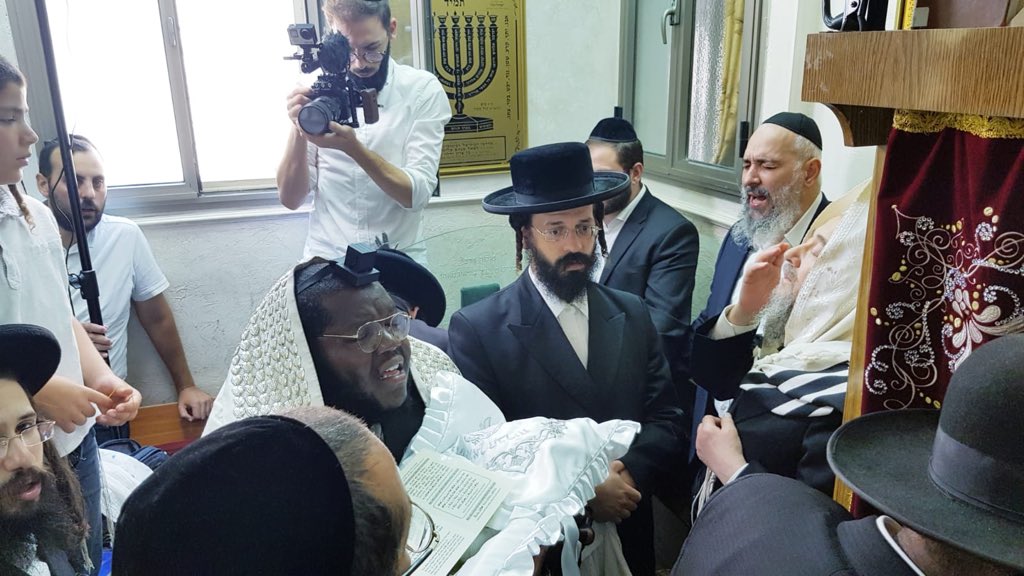
When I asked if he was looking forward to his daughter’s bat mitzvah, he said, “Yes and no,” with a laugh. “It’s so hard, you want to keep them all young and small and dependent on you. It’s hard to really give that up! She’s becoming more of a teenager. It’s really tough.”
Life in Israel has been an adjustment for Black and his family. “Coming from Seattle, I wasn’t used to this many hot days in a row,” he jokes.
“It took me a little bit,” to adjust, Black explains. “I come from a different background, you know, [a] more urban — trying to be nice and say this! — background. Usually when you step on my shoe, or you bump into me, or you push me out of the way, that means that you want to fight. In Israel, it doesn’t mean it,” Black laughs. “You have to get used to it. I’m very much adjusting to the way things move in Israel.”
Being a Black religious Jew has definitely not always been easy for Black; in 2018, he was in the news after he shared that his children hadn’t been accepted to yeshivas (Jewish schools) because they were Black. He went to visit with Rabbi Chaim Kanievsky, who told him that “being ‘Black’ is your Mayla (Virtue) not a Chesaron (Lacking).”
For a second it felt like the whole world stood still. Being "Black" is your Mayla (Virtue) not a Chesaron (Lacking), says Rav Chaim! pic.twitter.com/MkORW9nMzb
— Nissim Black (@nissimblack) August 27, 2018
But he remains positive, and wants people to know that, “I put my heart into my music and I love to give my heart to everyone. I’m a lover of humanity.”
His relationship to Judaism also shifted once making aliyah. “The prayer and the devotion to spirituality in Israel is amazing. I could have the most amazing conversations with a Jew or a Christian or an Arab in Israel that I can’t get anywhere else in the world. In terms of spirituality, the place is on a whole other level.”
That’s why he’s so excited that his new music is reaching an audience outside of just the Jewish community. “I feel like one of the most beautiful things about me being able to make music as a Jew is that I can talk about spirituality in a way where it doesn’t conflict with people,” Black says. He’s never proselytizing; he loves that Judaism has a “universal message of spirituality.”
But of course, he still leans into his Judaism — it’s who he is. The video for “Mothaland Bounce” is intercut with Black, alone, in festive Hasidic dress — in addition to his long peyos, traditional side curls, he is wearing a bekeshe, a Hasidic black coat, tallit, prayer shawl, and a shtreimel, a fur-trimmed hat.
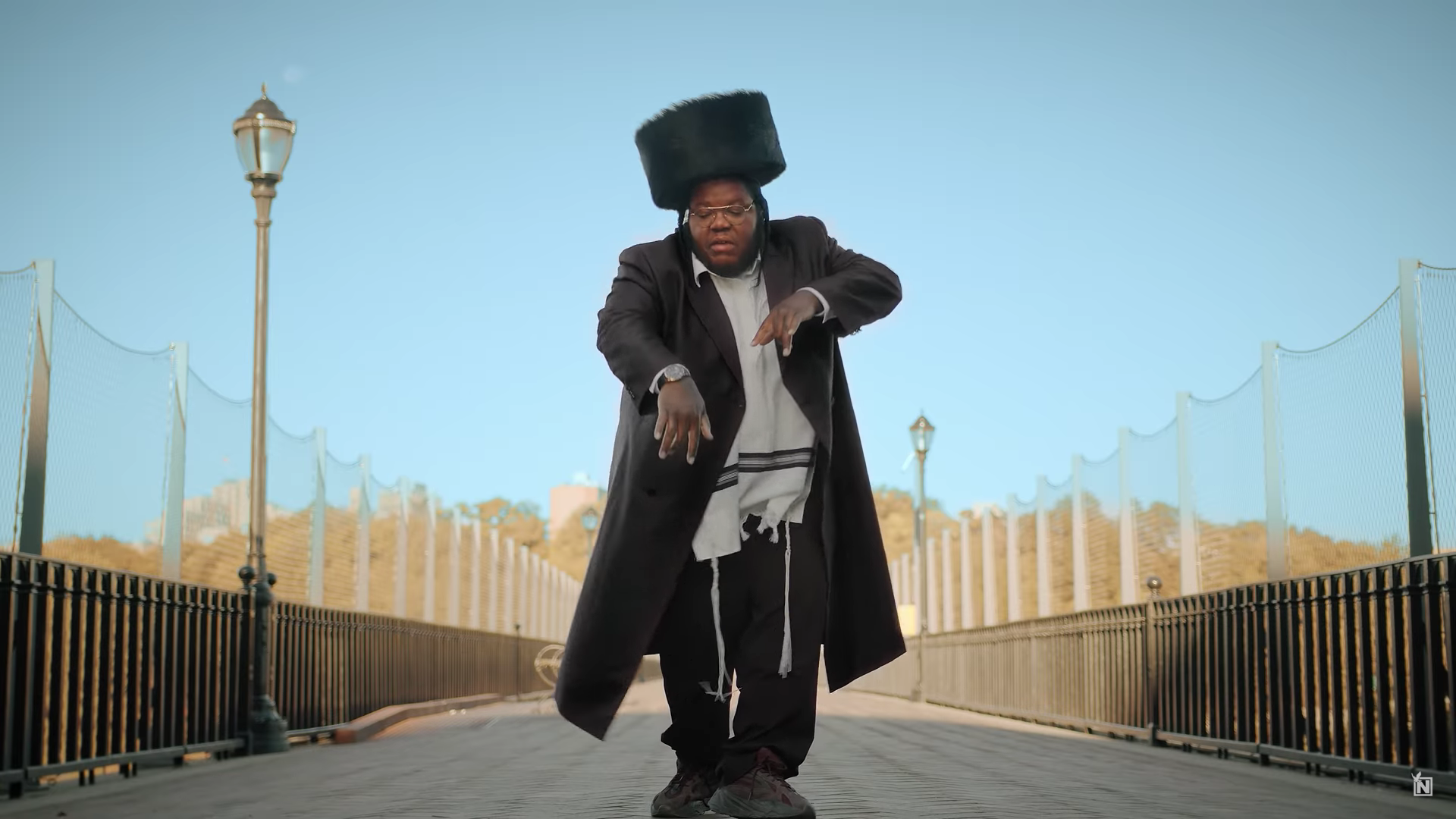
The visuals of Black Jews dancing in “Mothaland Bounce” are important to Black, as are any mainstream images of Black Jews.
“Unfortunately, primarily in New York, there’s been a lot of violence [in] the relationship between the African American community and the more religious Jewish community. It’s been very, very shaky and it’s gotten uglier and uglier,” Black says. By showing Black religious Jews, he feels, it will help bring awareness that these two communities aren’t as separate as they may perceive themselves to be. He wants people not to just think someone is the “enemy because of the color of [their] skin.”
“Awareness will definitely help to have the proper conversations that need to be happening between the two communities,” he says. “I would hope that this [song] will be one step forward in that direction.” His mere existence, he hopes, will open dialogue.
“Quite honestly, I owe my life on a physical level, for sure, to the African American community. They gave me everything I need — including my parents and everything. But then on a spiritual level, Judaism has given life to me. I feel like I owe my life [to Judaism]. I’m willing to sacrifice even my standing and notoriety in [the] very religious world to be able to try to bring peace between the two, because it means that much to me.”
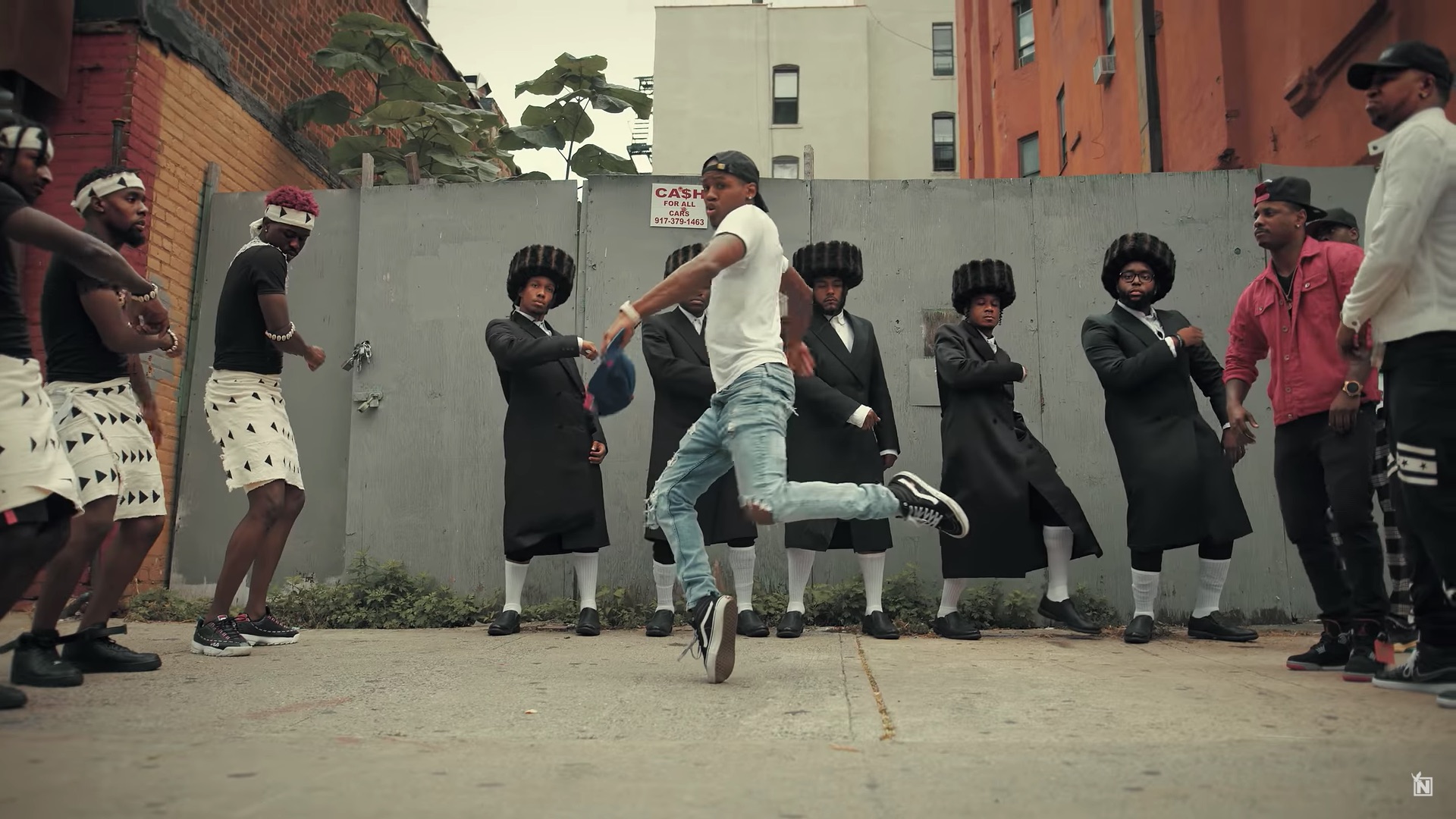
His ultimate dream? To be on the world stage, and for his music to be a “springboard” for vital conversations about acceptance. He wants to “shine God’s light in the world.”
“The power that I have [is] that I can share what nobody else can: my story,” Black explains, “which is very, very unique in itself.” He’s right: There’s not a single person in this world like Nissim Black.
Header image and all other images (unless otherwise credited) via “Mothaland Bounce” music video.
